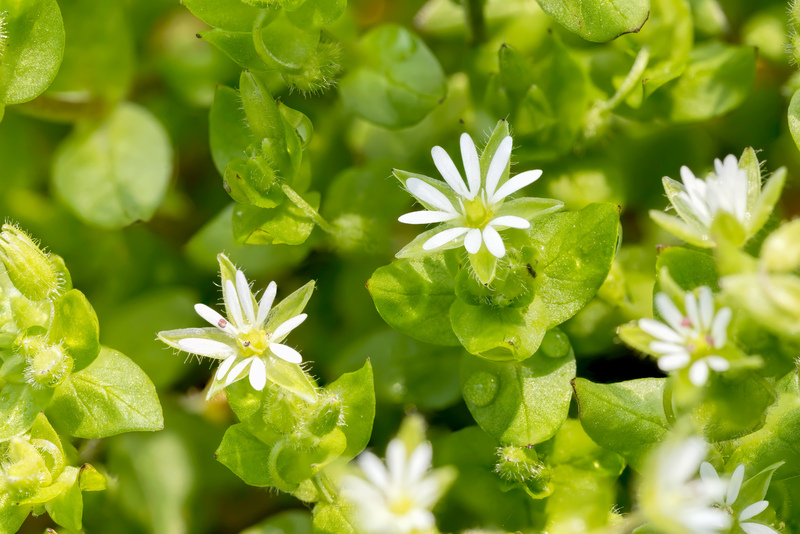Achieving Lawn Perfection: Beginner's Care Secrets You Can't Miss
There's nothing quite as satisfying as stepping outside and admiring a vibrant, healthy, green lawn. Achieving lawn perfection may seem daunting, especially to beginners, but with the right guidance and commitment, your dream yard is within reach. In this comprehensive guide, we'll uncover the essential care secrets for establishing, maintaining, and enjoying a stunning lawn. Whether you're starting with a patchy yard or nurturing a fresh seedbed, these tips will help you succeed.
Why Lawn Perfection Matters
A well-kept lawn does more than just boost your property's curb appeal. Perfect lawns act as natural air filters, promote biodiversity, cool your outdoor space, and create the perfect area for relaxation and play. Investing time in understanding lawn care essentials pays off not only aesthetically but also environmentally.

First Things First: Know Your Lawn
1. Understanding Your Grass Type
The first step in achieving a flawless lawn is to identify your grass variety. Grass types vary in their climate requirements, growth patterns, color, and texture. Some common types include:
- Kentucky Bluegrass - Lush and resilient, excellent for cooler climates.
- Bermuda Grass - Heat-tolerant and drought-resistant, suited for southern lawns.
- Fescue - Adaptable to shade, making it perfect for partially sunny yards.
- Ryegrass - Fast-growing, great for overseeding or repairing patches.
- Zoysia - Dense and soft, thrives in warmer zones.
*Tip: Check your local extension office or nursery to accurately identify your lawn's grass variety and select the right care routines.*
2. Assessing Soil Health
The foundation of lawn perfection is healthy soil. Soil testing tells you if your ground needs nutrients, pH adjustments, or improved texture. Here's how to assess your soil:
- Purchase a simple soil test kit from your garden center
- Test for pH (most grasses thrive at pH 6.0 to 7.0)
- Check for nitrogen, phosphorus, and potassium (N-P-K) levels
- Amend with lime or sulfur as needed for pH balance
Healthy soil is the secret beneath every perfect lawn!
Foundational Lawn Perfection Care Steps
1. Watering Wisdom
Proper watering is the backbone of lush lawn care. Avoid the rookie mistake of frequent, shallow watering. Instead:
- Water deeply and less often to train roots to grow downward
- Early morning is the optimal time--this reduces evaporation and risk of fungus
- Most lawns need about 1-1.5 inches of water weekly (including rain)
- Use a tuna can trick: Place an empty can on your lawn; stop watering when it fills to 1 inch.
Under-watering leads to weak, dry grass, while over-watering promotes disease. *Balance is your friend!*
2. Mowing Like a Pro
How you mow impacts lawn health tremendously. Here are the mowing must-dos for lawn perfection:
- Never remove more than one-third of the blade in a single mow
- Keep mower blades sharp and clean to ensure smooth cuts
- Change mowing directions every session to avoid soil compaction
- Adjust height for your grass variety--generally keep cool-season grasses at 2.5-3.5 inches, warm-season grasses at 1-2 inches
- Leave clippings on the lawn if possible; they decompose and feed your grass
Consistent mowing supports uniform growth and a sparkling green appearance.
3. Fertilizing Fundamentals
The secret ingredient in every perfect lawn is appropriate fertilization. Too much can "burn" your grass; too little, and your effort falls flat.
- Follow recommendations from your soil test report for N-P-K
- Use slow-release fertilizers for even, longer-lasting results
- Apply fertilizers in spring and fall (for cool-season grasses) or late spring to midsummer (for warm-season grasses)
- Water in fertilizer lightly after application to prevent runoff
- Avoid applying before heavy rains
Remember: Fertilizers supply nutrients, but don't substitute them for good soil practices!
4. Weed and Pest Control Tactics
Weeds and lawn pests are the sworn enemies of lawn perfection. Early intervention is crucial:
- Hand-pull weeds or use a targeted post-emergent herbicide
- Apply pre-emergent herbicides in early spring to prevent weed seeds from germinating
- Check for signs of grubs, chinch bugs, and other destructive insects
- Choose natural or selective insecticides instead of harsh chemicals when possible
- Encourage beneficial insects and birds that eat pests
Consistent monitoring will save you labor later!
Advanced Lawn Perfection Tips for Beginners
1. Aeration: Breathing Life Into Your Lawn
Compacted soils starve roots of oxygen, stunting grass growth. Annual aeration involves perforating the soil with small holes (using a core or spike aerator) that:
- Enhance air and water movement
- Encourage root development
- Reduce thatch buildup
- Make fertilizer applications more effective
The best time to aerate is during the growing season: early spring or fall for cool-season grasses, late spring for warm-season grasses.
2. Overseeding for Bare Spots
Patchy lawns betray the look of perfection. Overseeding boosts grass density and improves color:
- Mow grass low and remove debris before overseeding
- Choose grass seed that matches or blends well with your existing variety
- Spread seed using a broadcast or drop spreader
- Lightly rake to ensure good seed-to-soil contact
- Keep soil consistently moist until seedlings are established
Overseeding annually invigorates your lawn and keeps your turf lush.
3. Dethatching for Deep Green Lawns
Thatch--a layer of organic debris between soil and grass blades--can suffocate lawns if thicker than 1/2 inch. Dethatching techniques include:
- Raking vigorously with a dethatching rake
- Using a mechanical dethatcher for larger lawns
- Removing in early spring or fall to minimize lawn stress
Don't overdo it; moderate thatch helps insulate and cushion your lawn.
Seasonal Lawn Care for Lasting Perfection
Spring Lawn Care Steps
- Rake and remove winter debris
- Aerate if needed
- Apply pre-emergent weed control
- Fertilize early in the season
- Spot-repair dead patches with seed or sod
Summer Lawn Care Steps
- Mow high to protect roots during heat
- Water deeply, preferably mornings
- Watch for signs of drought stress: gray-blue color, footprints staying visible
- Control insects and treat fungal outbreaks promptly
- Limit fertilizer to avoid burning grass
Fall Lawn Care Steps
- Clear fallen leaves regularly
- Overseed and patch bare areas
- Apply balanced fall fertilizer
- Aerate to loosen soil
- Reduce watering frequency as temperatures drop
Winter Lawn Care Steps
- Avoid heavy foot traffic when grass is dormant
- Keep lawn clear of debris and leaves
- Use ice melts sparingly along walkways
- Plan for spring improvements now
A year-round approach gives you the ultimate advantage when achieving the perfect lawn.
Lawn Care Mistakes Beginners Should Avoid
- Overwatering - Leads to root rot and invasions by fungi and pests
- Mowing too short - "Scalping" stresses grass, making it vulnerable
- Fertilizing in drought - Wastes product and harms stressed lawns
- Ignoring signs of stress - Address patchiness, discoloration, or diseases quickly
- Neglecting soil health - Skimping on aeration, amendments, or tests costs you in the long run
Organic Lawn Care: Eco-Friendly Perfection
Interested in a more natural approach to lawn perfection? Organic lawn care swaps chemical inputs for sustainable practices:
- Use compost as a top dressing and fertilizer
- Seed with hardy, drought- and pest-tolerant grass varieties
- Apply organic weed suppressors (corn gluten meal, vinegar solutions)
- Encourage earthworms and beneficial insects
- Mulch-mow to keep nutrients on-site
Organic methods not only improve your lawn but also protect kids, pets, and local wildlife.
Essential Tools for Lawn Perfection
- Lawn mower (preferably adjustable height)
- Soil test kit
- Watering system or sprinklers
- Garden rake and dethatching tool
- Grass seed and spreader
- Fertilizer and application tools
- Aerator (manual or powered)
- Hand trowel for spot repairs
Having the right tools streamlines lawn perfection and reduces frustration.

Lawn Perfection FAQ: Common Questions for Beginners
How often should I mow my lawn?
Most lawns benefit from mowing every 5-7 days during peak growth. Adjust frequency based on grass type and weather.
When is the best time to fertilize?
Fertilize cool-season grasses in early spring and early fall; warm-season grasses in late spring and early summer. Always check soil needs.
What's the easiest way to fight weeds?
A thick, healthy lawn naturally crowds out weeds. Combine regular mowing, proper watering, and pre-emergent herbicides for best results.
Can I achieve lawn perfection without chemicals?
Absolutely! Focus on organic fertilizers, healthy soil, proper mowing, and overseeding. Nature can provide stunning results.
Why is my grass turning yellow?
Yellowing could signal nutrient deficiencies, overwatering, dull mower blades, or even pest issues. Check, investigate, and correct.
Conclusion: Start Your Journey to Lawn Perfection
Achieving a perfect lawn may seem challenging at first, but with patience and the right beginner tips, your yard can be the envy of the neighborhood. Remember: healthy soil, correct mowing and watering, timely feeding, and vigilant weed control form the core of lawn perfection.
Embrace these beginner's care secrets, experiment with your routine, and watch your green oasis flourish! With each step, you'll build the expertise--and the stunning results--that make all the effort worthwhile.